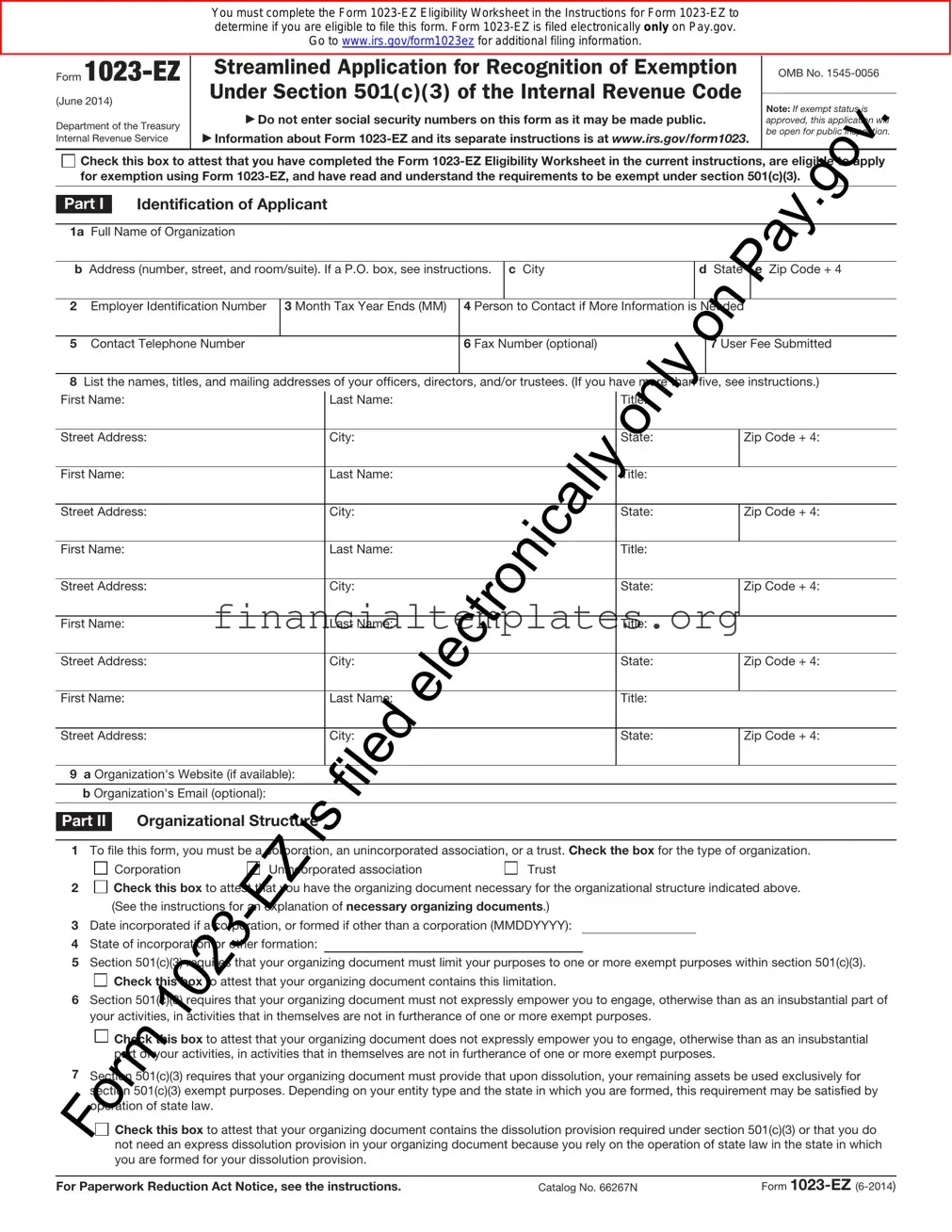The IRS 1023-EZ form, a streamlined application for recognizing an organization as tax-exempt under section 501(c)(3) of the Internal Revenue Code, shares similarities with several other documents across different domains. It simplifies the process for small nonprofits, but this notion of streamlining complex applications can be seen in other areas too.
One document similar to the IRS 1023-EZ form is the IRS Form 1040-EZ, which is used for individuals to file their federal income taxes in a simplified manner. Like the 1023-EZ, the 1040-EZ is designed for a specific subset of users who meet certain criteria, aimed at making the tax filing process quicker and less complicated by requiring less information than the standard 1040 form.
The U.S. Small Business Administration's (SBA) Disaster Loan Application also mirrors the IRS 1023-EZ form in its intent to streamline the application process for those in need. Specifically designed for businesses, homeowners, and renters affected by natural disasters, this form facilitates access to financial assistance by simplifying the requirements and steps needed to apply.
The Form I-90, used for renewing or replacing a Green Card, presents another parallel. This form simplifies the process for permanent residents to maintain their status, focusing on efficiently collecting essential information. The streamlined nature of the Form I-90 for a specific target audience closely aligns with the 1023-EZ’s approach to tax-exemption applications.
In the realm of healthcare, the Healthcare Marketplace Application for individuals seeking health insurance offers simplified options much like the 1023-EZ. The Marketplace Application is designed to ease the process of obtaining healthcare coverage by guiding applicants through a tailored path based on their specific circumstances and needs.
The Common Application for college admissions streamlines the process of applying to multiple institutions of higher learning through one platform. Similar to the 1023-EZ, it collects a wide range of information pertinent to its purpose but simplifies submission to various organizations, in this case, colleges and universities.
Another equivalent document is the Electronic System for Travel Authorization (ESTA) application, which simplifies the process for international travelers seeking entry into the United States under the Visa Waiver Program. By providing a shortened form with fewer requirements than a visa application, ESTA makes it quicker and more straightforward for eligible travelers to gain permission to travel to the U.S.
The Simplified Employee Pension (SEP) plan IRS Form 5305-SEP is designed to make it easier for small businesses to set up retirement plans for their employees. Much like the 1023-EZ, this form seeks to remove barriers for certain groups - in this case, small employers - by streamlining the setup process and making it more accessible.
Lastly, the FCC Form 605, Quick-Form Application for Authorization in the Ship, Aircraft, Amateur, Restricted and Commercial Operator, and General Mobile Radio Services, simplifies the licensing process for various communications services. It directly aligns with the 1023-EZ’s philosophy of making governmental processes more accessible, this time in the context of communications licensing.
These documents, each from distinct areas of government and public service, lean on the principle of streamlining complex procedures for specific groups. They offer a simpler, quicker path through bureaucratic processes, mirroring the intention behind the IRS 1023-EZ form’s design to facilitate tax-exempt status applications for eligible small entities.





 status is a more favorable tax status than private foundation status.
status is a more favorable tax status than private foundation status.